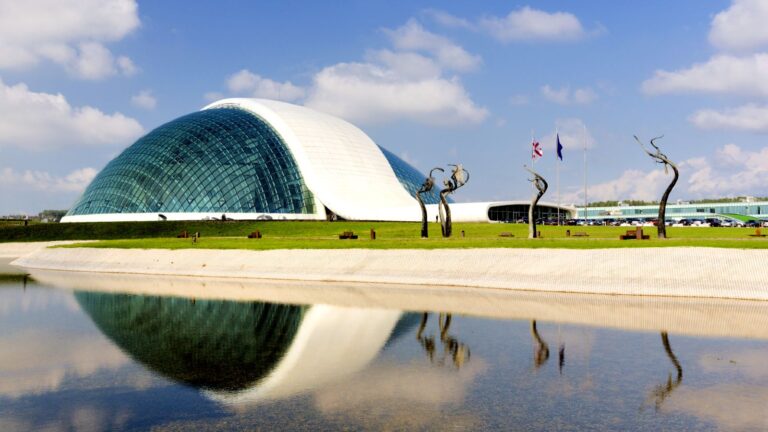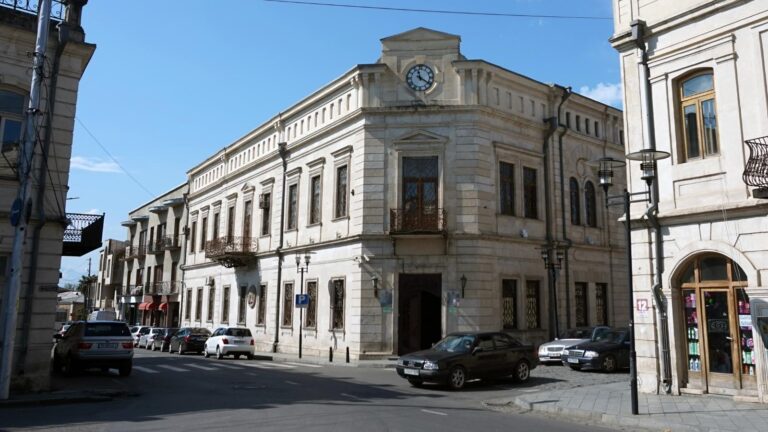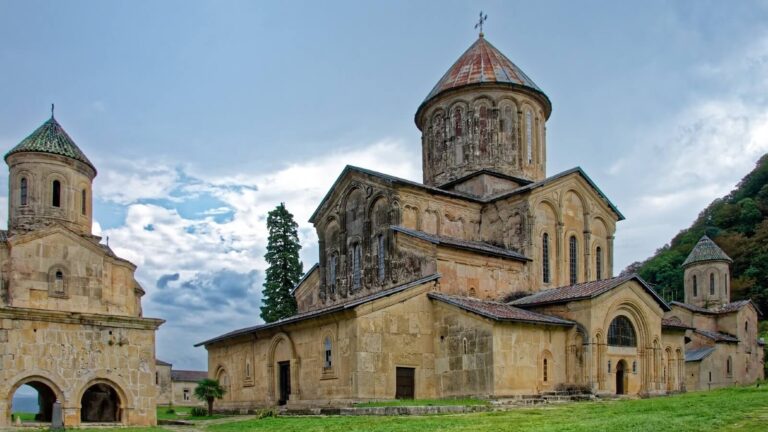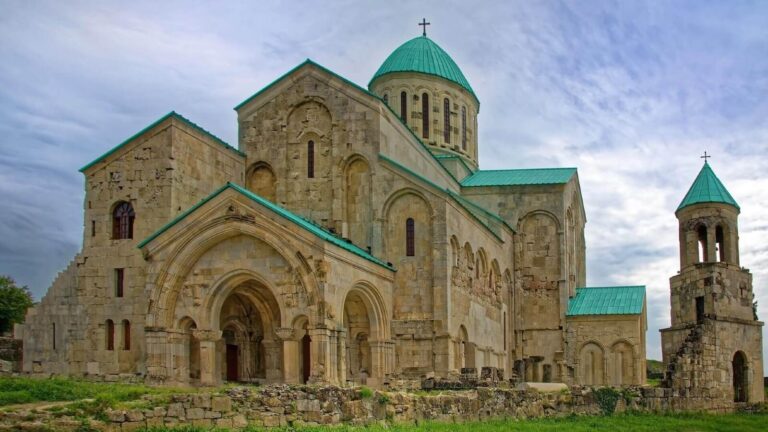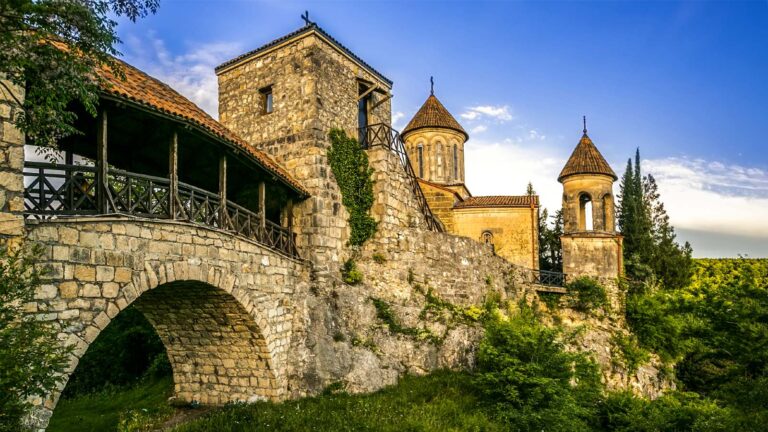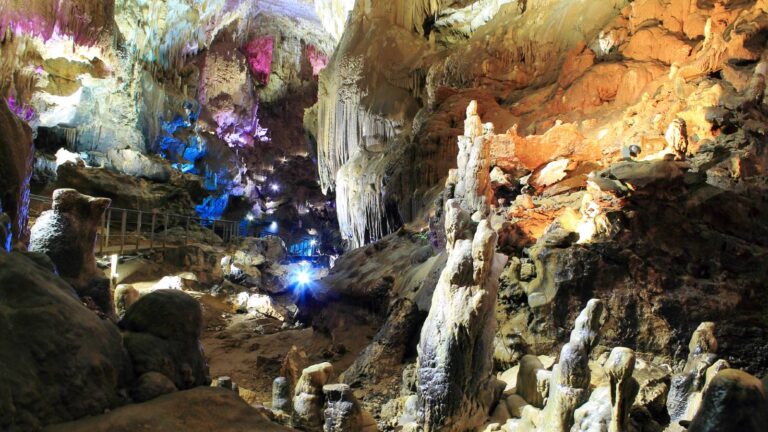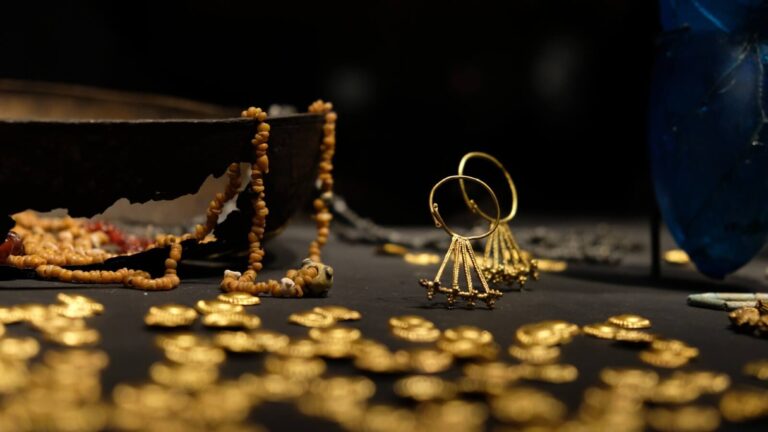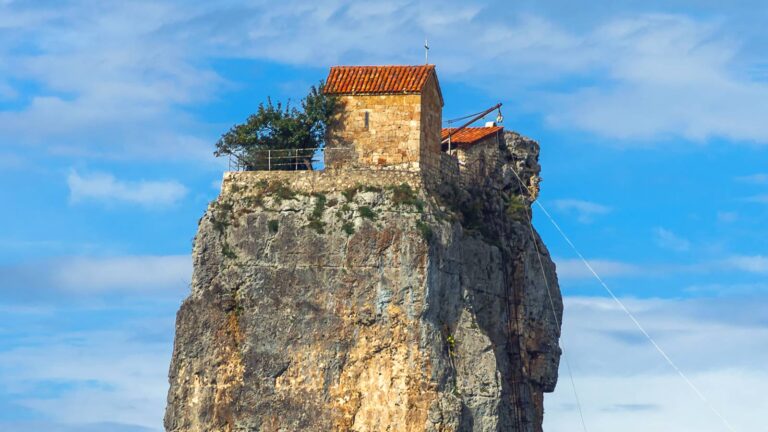Main image: Kabelleger, David Gubler, CC BY-SA 4.0, via Wikimedia Commons (cropped image)
Getting There
To get to Chiatura you have to take the train from Tbilisi to Zestaponi. From there you can take a direct train to Chiatura. You can also get there by car – the 186 km from Tbilisi to Chiatura takes about 2.5 hours.
From Kutaisi, the car trip takes 1h 20min.
Another option would be to take a “Marshrutka (Minibuss) From Tbilisi (Didube station) to Chiatura, which takes about 3 hours and costs 12 GEL.
From Zestaponi and Sachkhere there are Minibusses too.
What to Expect
Chiatura Municipality is distinguished by its astonishing nature and unique cultural monuments. The area is rich with small lakes and waterfalls that are perfect for picnics and beautiful caves, which make an impression on the visitor. One of the many cultural and historical sights is the Katskhi temple with the cave monastery in a rock cave.
Another famous natural monument in Chiatura is Katskhi Pillar, built by king Bagrat IV Kurapalat. There also is a museum of local lore in Chiatura, with a large variety of fighting tools, pottery, jewelry, etc. To sum up, in Chiatura, we have everything that a nature lover or someone interested in culture would love to explore.
History
Chiatura was inhabited during the Bronze Age and in antiquity. It was also developed in the Middle Ages, as evidenced by the many castles and temples preserved. Remains of the world’s oldest thread have been found in the Dzudzuana Cave in Chiatura;
The entire skeleton of a Paleolithic human was discovered for the first time in the history of Caucasian archaeology in the Kotia Cave on the municipality’s territory.

